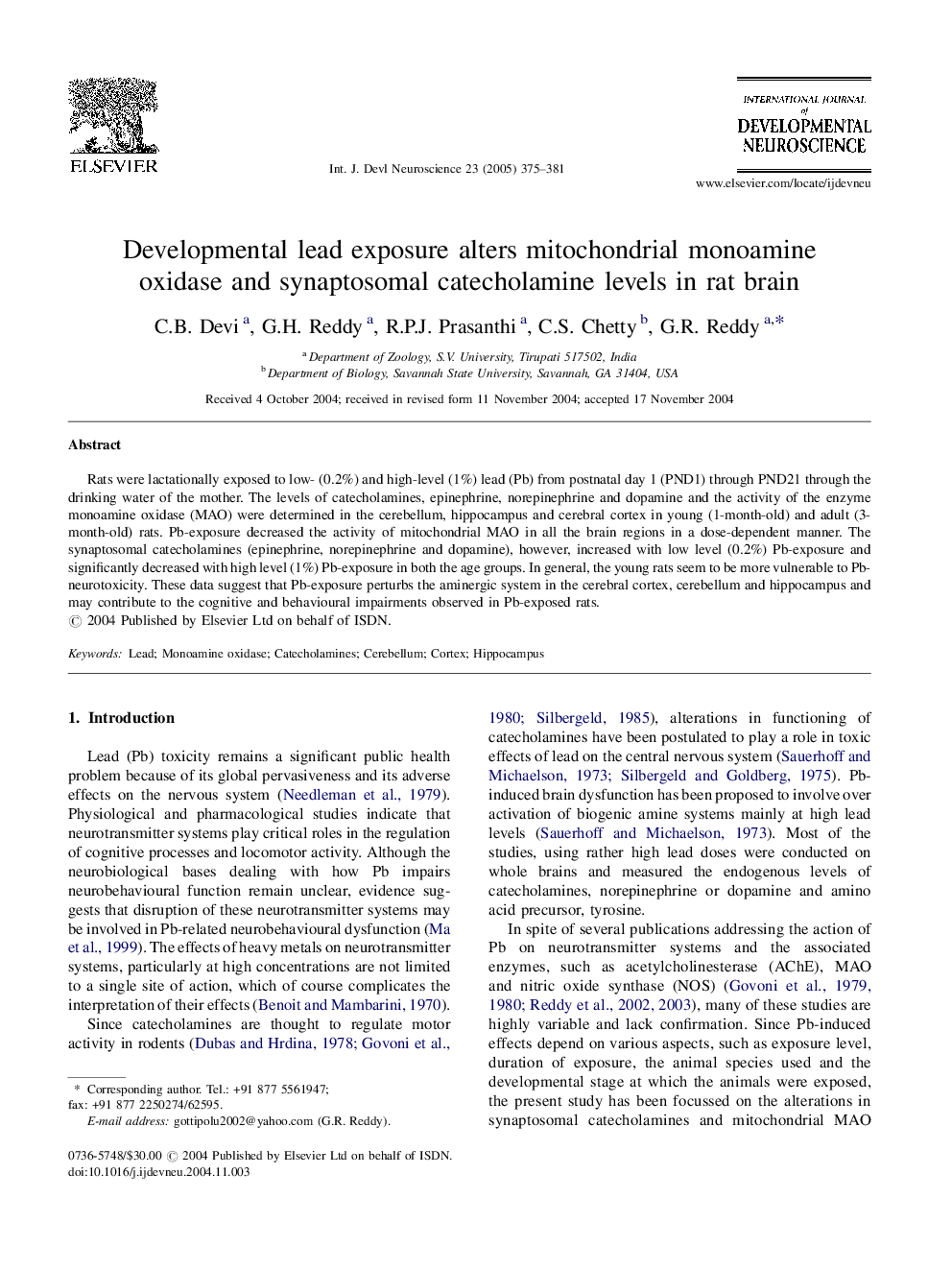| Article ID | Journal | Published Year | Pages | File Type |
|---|---|---|---|---|
| 9933588 | International Journal of Developmental Neuroscience | 2005 | 7 Pages |
Abstract
Rats were lactationally exposed to low- (0.2%) and high-level (1%) lead (Pb) from postnatal day 1 (PND1) through PND21 through the drinking water of the mother. The levels of catecholamines, epinephrine, norepinephrine and dopamine and the activity of the enzyme monoamine oxidase (MAO) were determined in the cerebellum, hippocampus and cerebral cortex in young (1-month-old) and adult (3-month-old) rats. Pb-exposure decreased the activity of mitochondrial MAO in all the brain regions in a dose-dependent manner. The synaptosomal catecholamines (epinephrine, norepinephrine and dopamine), however, increased with low level (0.2%) Pb-exposure and significantly decreased with high level (1%) Pb-exposure in both the age groups. In general, the young rats seem to be more vulnerable to Pb-neurotoxicity. These data suggest that Pb-exposure perturbs the aminergic system in the cerebral cortex, cerebellum and hippocampus and may contribute to the cognitive and behavioural impairments observed in Pb-exposed rats.
Related Topics
Life Sciences
Biochemistry, Genetics and Molecular Biology
Developmental Biology
Authors
C.B. Devi, G.H. Reddy, R.P.J. Prasanthi, C.S. Chetty, G.R. Reddy,
